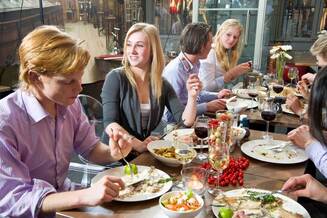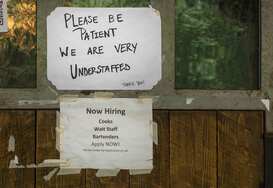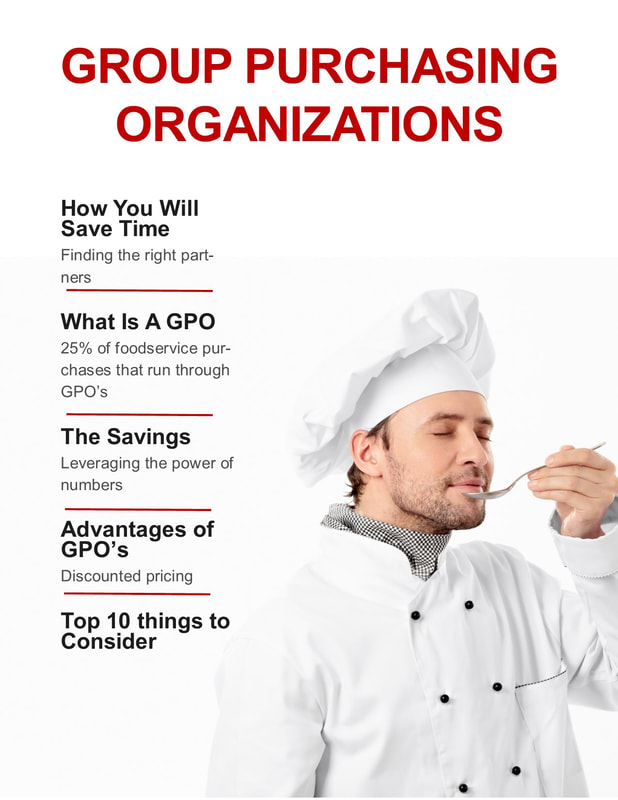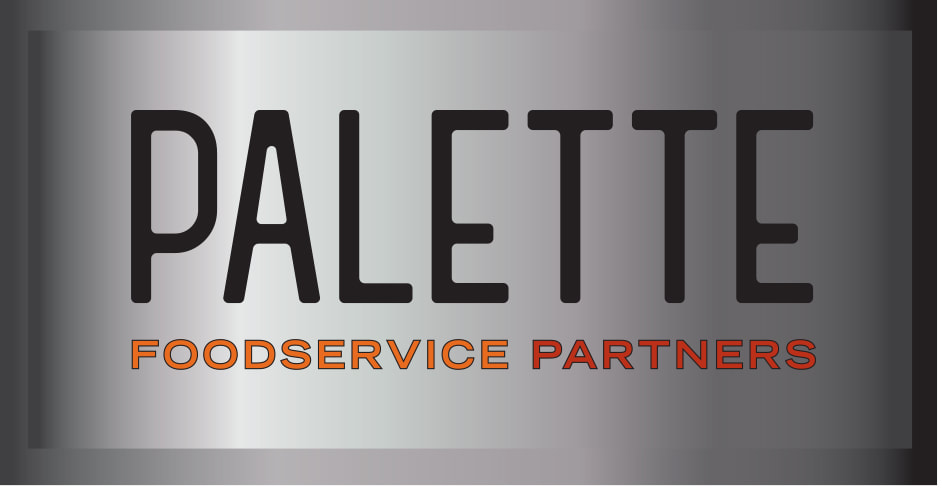 Environmental, social and governance standards (ESG) are fast becoming must-have pillars of responsibility for organisations across industry sectors. These standards generally tie a company’s corporate compensation to performance metrics in areas including environmental impacts and workforce diversity. A number of brands in the restaurant industry have publicly shared their ESG standards. Most recently Papa John’s, but also Starbucks, Wendy’s, Chipotle and McDonald’s have made announcements tying their corporate compensation to ESG goals. Across sectors, ESG standards tend to give brands some environmentally friendly luster with investors and consumers, even though they aren’t perfect indicators of how environmentally friendly a company may be. (As a recent report from the Harvard Business Review stated, “ESG ratings are based on…the impact of the changing world on the company’s profits, not the reverse.”) Regardless, ESG standards are increasingly shining a spotlight on what brands are – and aren’t – doing with regard to the environment and social responsibility. Even if you don’t have formal ESG standards, it’s prudent to look at what other brands are saying about their practices and consider what commitments you can make to reduce waste, offer sustainably sourced items on your menu, adopt environmentally friendly products and practices, and improve efforts at diversity and inclusion. Your guests and potential staff are watching – and you have an opportunity to attract them through your actions.  The past few years have been a time of reinvention for restaurants and now, amidst inflation and with a likely recession ahead, restaurant brands need to be creative and resourceful to remain in business. Virtual brands, once touted as a helpful means of diversifying business when dining rooms had to close, have now been around long enough for more nuanced assessments to emerge. Michael Jacobs, co-founder and the original CEO of Ordermark and someone who helped conceive of Nextbite, recently told The Spoon that virtual brands are hardly a lifeboat for a restaurant that is floundering. Really, their value lies in expense savings – benefiting from joint purchasing power and shared business resources. They may well make good business sense, though mostly for restaurants that can identify several complementary brands that have similar needs. Call Team Four Foodservice to find out how they can help you leverage your buying power.  According to Datassential, 60 percent of restaurant menus have gotten smaller in recent years. As menus have slimmed down and inventories have had to stretch farther, the language you use to present your menu items becomes that much more important. Your menu is also one of the first things a potential guest sees from your restaurant if they order online, so it needs to create the right first impression about your brand. That’s something that may need some attention at your restaurant as you update the language you use on your menus to accommodate a newly streamlined selection or a shifting supply of ingredients. As Guillermo Ramirez, creative director of the Miami marketing agency Gluttonomy Inc. told Eater recently, “The menu is just like a business card.” It needs to encapsulate your business and accurately reflect its brand and values, in addition to what you’re serving, while leaving some room for surprise. At the same time, you want to hold guests’ attention and make every word count. In your menu descriptions, consider including the names of key ingredients, along with brief, vivid descriptive words that engage the senses, as well as a word or two on how the dish is prepared. Highlight any premium ingredients you’re using, along with local suppliers that guests may know. Eliminate jargon to ensure you communicate clearly and avoid creating the wrong kind of surprise about what they are ordering.  While restaurant delivery surged during the worst parts of the pandemic, momentum has slowed as consumers have returned to in-person dining and takeout orders. In fact, a recent study from Paytronix found that takeout now accounts for a majority of all digital orders. In the background, restaurant tech companies have been stumbling amid layoffs and profitability challenges. This has led some to question the long-term viability of delivery, which was difficult for restaurants to make work financially even in more stable economic times. On the surface, a rise in takeout business sounds like good news. But it may be just a blip before tech-driven delivery rebounds, according to a new book, Delivering the Digital Restaurant by Meredith Sandland and Carl Orsbourn. They say restaurant tech is still in its infancy and it can be difficult to imagine a different way of operating, but “there are places in the world where delivered food is actually cheaper than eating at a restaurant, even without drones and sidewalk robots and automated food trucks cooking en route.” Delivered food at a lower cost is possible, they say. However, front-of-house staff, dedicated dine-in space, prime real estate, and a third-party companies making deliveries aren’t part of the picture in those cases. As much as restaurant businesses have winnowed down their operating models, there is likely much more change to come. If delivery is a critical pillar to your business, how might you further transform your model to make it work?  The National Restaurant Association has said that employee turnover in the restaurant industry is nearly 75 percent, compared to about 49 percent for the total private sector. So as painful as the Great Resignation has been for the US economy overall, restaurant operators have felt it especially severely. Restaurant companies that are succeeding at recruitment and retention right now are taking steps to be as proactive as possible at bringing in potential staff and then giving them the career options and stability they need to stay. In a recent webinar, “The Future of Food: The Role of Technology in Restaurant Recruitment and Retention," presented by SmartBrief, Jamie Starner of Bartaco mentioned that every one of their applicants is likely applying for seven other jobs at the same time, so it’s critical to make it easy for people to apply for open positions and then respond to their inquiry promptly. To make that happen, the company uses QR codes to connect people to their open positions, sends applicants a text in response, and uses the Calendly app to encourage applicants to schedule their interview on the spot. Keeping staff happy, according to the restaurant leaders on the webinar, has been about showing them potential career paths at the company, polling them regularly to better understand what they need, and offering the stability and flexibility that comes with offering a salary and other benefits. Instead of accepting tips, some incentivize good service through bonuses provided in exchange for high online reviews each month. For Kelly Phillips of Destination Unknown Restaurants, being able to provide a salary and a career path more akin to what someone might find in other parts of the private sector has been about operating as leanly as possible – using handheld POS devices has helped the company slim down the number of staff needed, for example, so the company has the resources to take good care of the ones on hand. As a result, she says, she doesn’t often have server openings, doesn’t have the ongoing expense of recruitment, and some former servers have stayed to become partners in the company.  Pre-pandemic, it may have been a given that Friday and Saturday nights were your peak times for guests. The past few years have thrown such assumptions up in the air as consumers have shifted their working hours and workplaces. As a result, your biggest happy hour crowd may have shifted to early evenings on Wednesday and Thursday. Your business lunch crowd may instead be coming for breakfast or a late-afternoon snack. During a recent discussion with veteran restaurant operators and industry experts that was organized by Nation’s Restaurant News and its CREATE educational program, participants acknowledged the shift. Victor Fernandez, vice president of insights and knowledge at Black Box, said the fastest-growing time of day is late afternoon between lunch and dinner. This blending of dayparts can be both a blessing and a curse for operators: Blurred lines between meals mean that consumers may crave a range of food and drink at all times and it’s always a good time to visit a restaurant. On the other hand, the lack of definition makes it difficult for operators to know how to plan and what to offer. It’s more important than ever to understand how your guests use your physical restaurant at every hour and how profitable they make your business per square foot during the times they are with you. Having this knowledge will help you know if and how to scale down your menu, staff or hours if business slows in the months ahead. At a time when consumers expect a lot from restaurants, understand where you’re best able to provide it and where you need to draw the line.  Remember when the public was just coming out of lockdowns and happily shrugged off restaurants’ limited hours, restricted seating, and unpredictable menus if it meant they could still enjoy a meal from their favorite establishments? You may have noticed that sentiment has faded a bit as consumers have lost patience with the ongoing pandemic. For many customers, the pre-pandemic mentality that “the customer is always right” has returned. They aren’t afraid to voice their dissatisfaction with a restaurant meal – or simply offer unsolicited comments about how the operator could improve the experience. This is despite operators’ ongoing challenges in recruiting and retaining staff, sourcing supplies, and paying larger bills for everything from ingredients to fuel. (A recent Eater report detailed the account of a much-lauded California restaurant that launched early in the pandemic but couldn’t continue operating amid the many demands it faced in the current economy.) Times are far from normal and a looming recession adds to existing pressures, so consider running your business with the same rigor as you did early in the pandemic. That means focusing on the basics of why you’re in business – know what values you stand for, who your ideal customer is, where you are (and aren’t) willing to compromise, what core things you want to make sure you execute well right now, and how many staff members are needed to help you accomplish them. Then don’t be afraid to stand your ground if guests ask for more.  While the leisure and hospitality sector added 67,000 jobs in the latest report from the Labor Department, indicating the ongoing rebound of the sector, the demand for restaurant food is continuing to stretch labor. In other words, it’s more important than ever for the people restaurants do successfully hire to stick around. Have you adapted your recruitment and retainment approaches to fit the current candidate’s market? Focus on finding the right fit from the start. In a recent report from QSR Magazine, the head of client success at Harver, a recruitment partner for McDonald’s and Chili’s, shared that it helps to identify the key skills you need from a person by giving them situational judgment tests. These include a series of scenarios that relate to the role and ask a candidate how they would respond. Much like considering the experience of a guest, streamline the application process and remove obstacles that could get in the way of their understanding the role accurately. Be crystal clear about the requirements of a job by avoiding jargon and providing examples of the kinds of situations a team member is likely to have to manage on the job. Think about your business as a launching pad for hires – what opportunities do you offer to help people develop new skills that help them progress in your business or can transfer to other industries? Where are there opportunities for you to offer flexibility? Finally, while your perks and benefits may get a person in the door, they won’t earn their loyalty if there isn’t a strong workplace culture in place. Focus on building and sustaining a close, supportive team.  As inflation continues to weigh on the economy and consumers’ level of comfort in making discretionary purchases, there is that much more pressure on restaurant operators to make the experience of restaurant meals worth the expense. But doing so doesn’t have to be about expending significant additional effort. It can be about using your technology to drive an easier, more engaging, more personalized experience with your brand – one that will tip the scales in your favor when a guest is wavering about whether and where to order a meal. Your loyalty program is a key tool in this effort, but operators shouldn’t simply lean on a cookie-cutter program – particularly at a time when it’s increasingly common for tech stacks to integrate plug-and-play options to help operators gain a competitive advantage through building loyalty. Looking at the information you have collected about your customer base, what offers drive them to purchase repeatedly from you? As a recent report from Pymnts.com indicated, brands are currently looking to differentiate themselves with such features as in-app concerts, gamified rewards, and meal subscription services that allow users to earn back money with each purchase. Others are partnering with complementary brands to build engagement and ramp up the potential rewards on offer. To maximize your opportunities for continuously capturing the interest of loyal guests, ensure that at every step of a transaction, you’re weaving in your business brand language, making sure users’ experience is consistent regardless of how they are ordering from you, and that you’re collecting data that helps you monitor guest responses and making adjustments based on what you’re learning. |
Subscribe to our newsletterArchives
April 2024
Categories
All
|




 RSS Feed
RSS Feed